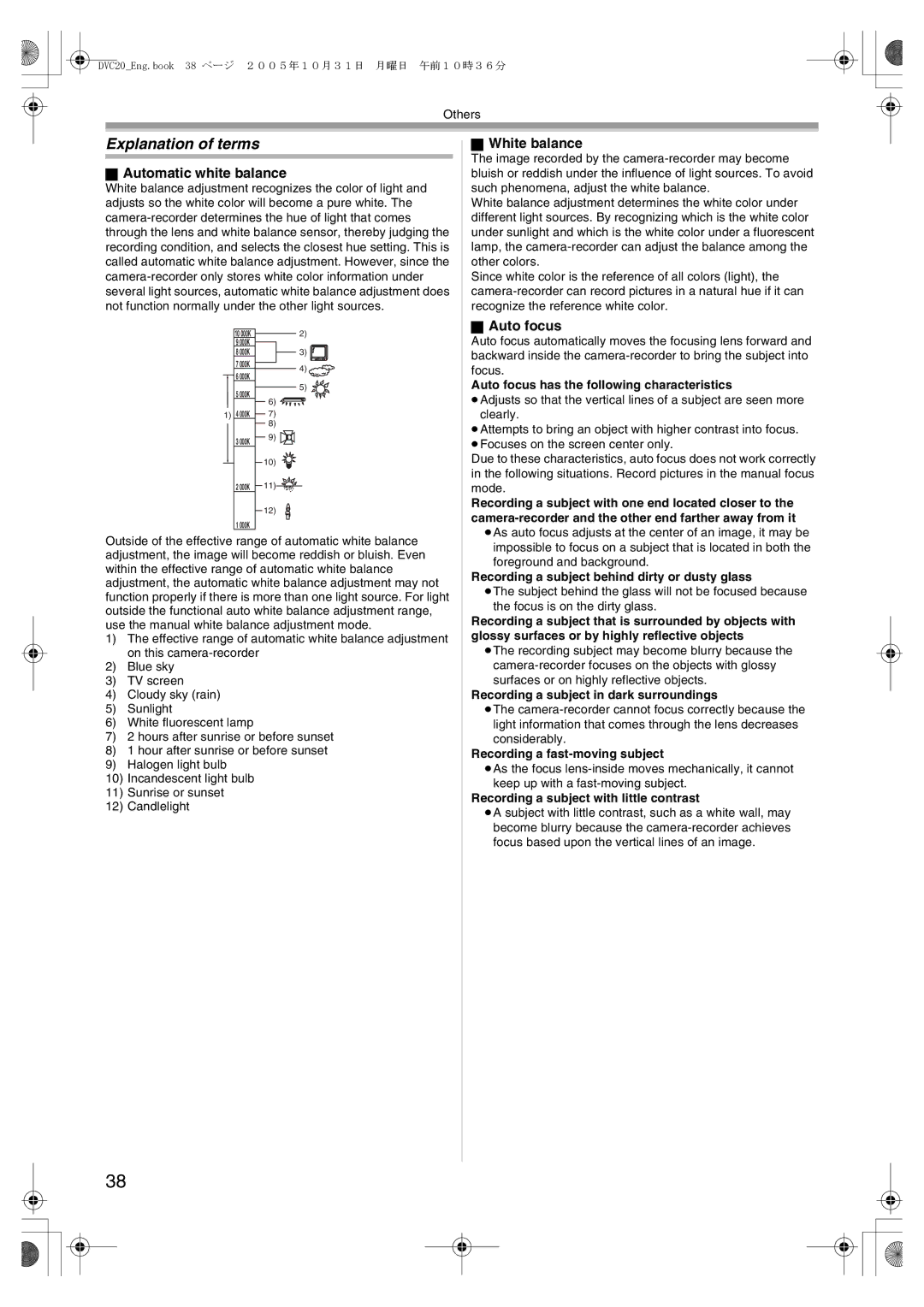
DVC20_Eng.book 38 ページ 2005年10月31日 月曜日 午前10時36分
Others
Explanation of terms
ªAutomatic white balance
White balance adjustment recognizes the color of light and adjusts so the white color will become a pure white. The
| 10 000K | 2) |
| 9 000K |
|
| 8 000K | 3) |
| 7 000K | 4) |
| 6 000K | |
|
| |
| 5 000K | 5) |
| 6) | |
|
| |
1) | 4 000K | 7) |
|
| 8) |
| 3 000K | 9) |
|
| |
|
| 10) |
| 2 000K | 11) |
12)
1 000K
Outside of the effective range of automatic white balance adjustment, the image will become reddish or bluish. Even within the effective range of automatic white balance adjustment, the automatic white balance adjustment may not function properly if there is more than one light source. For light outside the functional auto white balance adjustment range, use the manual white balance adjustment mode.
1)The effective range of automatic white balance adjustment on this
2)Blue sky
3)TV screen
4)Cloudy sky (rain)
5)Sunlight
6)White fluorescent lamp
7)2 hours after sunrise or before sunset
8)1 hour after sunrise or before sunset
9)Halogen light bulb
10)Incandescent light bulb
11)Sunrise or sunset
12)Candlelight
ªWhite balance
The image recorded by the
White balance adjustment determines the white color under different light sources. By recognizing which is the white color under sunlight and which is the white color under a fluorescent lamp, the
Since white color is the reference of all colors (light), the
ªAuto focus
Auto focus automatically moves the focusing lens forward and backward inside the
Auto focus has the following characteristics
≥Adjusts so that the vertical lines of a subject are seen more clearly.
≥Attempts to bring an object with higher contrast into focus. ≥Focuses on the screen center only.
Due to these characteristics, auto focus does not work correctly in the following situations. Record pictures in the manual focus mode.
Recording a subject with one end located closer to the
≥As auto focus adjusts at the center of an image, it may be impossible to focus on a subject that is located in both the foreground and background.
Recording a subject behind dirty or dusty glass
≥The subject behind the glass will not be focused because the focus is on the dirty glass.
Recording a subject that is surrounded by objects with glossy surfaces or by highly reflective objects
≥The recording subject may become blurry because the
Recording a subject in dark surroundings
≥The
Recording a fast-moving subject
≥As the focus
Recording a subject with little contrast
≥A subject with little contrast, such as a white wall, may become blurry because the
38
